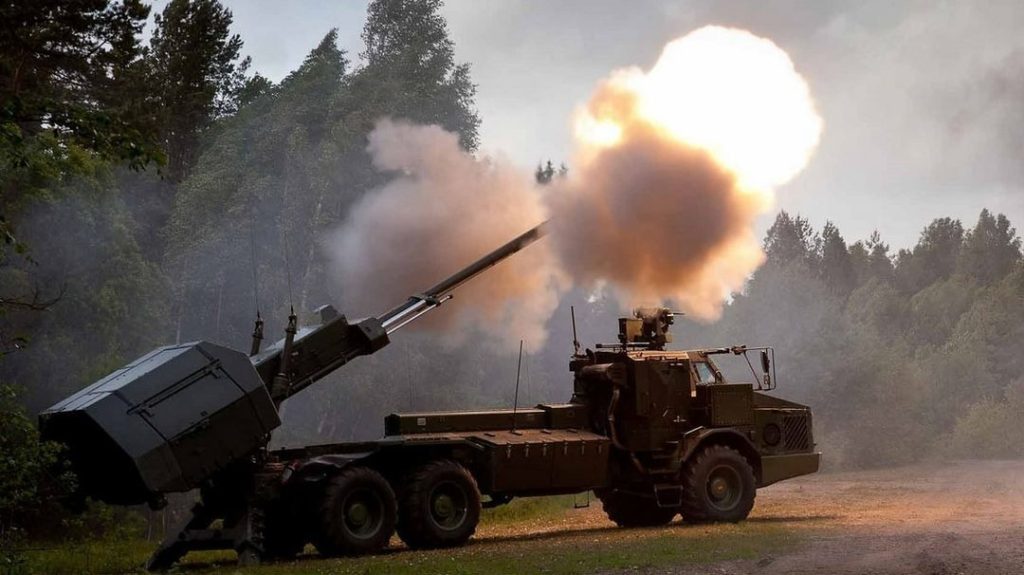On Friday, March 17, negotiations to obtain a political agreement on the joint purchase of ammunition for Ukraine will continue as EU ambassadors work to clear the remaining obstacles before the expected ratification next week.
The plan’s specifics were submitted by the EU’s diplomatic service (EEAS) at the beginning of March, but the bloc’s envoys could not agree.
The EU’s proposed three-track plan aims to increase 155mm ammunition output, increase the bloc’s overall industrial production capacity, and provide member states with financial support to provide ammunition from their current supplies to Ukraine.
Last week, the EU’s defense ministers agreed in principle to fund the first two tracks with €2 billion from the European Peace Facility (EPF), a non-EU budget fund.
The plan is to receive agreement on Monday, March 20, at a joint meeting of the EU’s foreign and defense ministers, followed by final approval from EU leaders at their regular summit in Brussels later that week.
EU leaders are expected to “praise the rapid agreement in the Council to assist the immediate provision of ammunition for Ukraine, including through joint procurement and the mobilization of sufficient finance,” according to the most recent draft conclusions.
However, there are still two significant areas of disagreement: whether or not member states would be permitted to buy ammunition from outside the EU and what percentage of the fund’s reimbursement they may anticipate.
Where to find suppliers
Western allies of Ukraine worry that after firing thousands of howitzer shells daily to fend off a relentless Russian attack, Kyiv is critically short of howitzer ammunition.
To fend off the Russian onslaught and enable it to launch its counter offensives, Kyiv has informed the EU that it needs 350,000 shells every month.
The EU’s Joint Procurement Task Force, which is made up of the European Commission, EEAS, and EU Military Staff (EUMS), has identified 15 industries in 11 member states that produce 155 mm NATO artillery ammunition as well as five producers of 152 mm ammunition from the Soviet era.
Thierry Breton, the commissioner for the internal market of the European Union, is currently visiting member countries with the potential to increase their ammunition production. He has already visited Bulgaria and is scheduled to visit Slovakia, the Czech Republic, Poland, France, and Romania after that.
But, if Europe cannot quickly and locally supply the ammunition needed for Ukraine, several member states want to be permitted to do so.
The EU’s industrial capacity is now higher than in many of our non-EU partners. But, practically all of this output is already contracted, according to EU parliamentarians’ remarks on Wednesday from Mairead McGuinness, European Commissioner for Financial Services (15 March).
This comes amid claims from EU authorities and a few members, like the Baltics, Poland, and the Netherlands, that the limited production capacity on the continent and the pressing need to send munitions to Kyiv could cause further delays.
On the other hand, France, Greece, and Cyprus only use funds from EU member states for businesses headquartered in the EU.
The European Defense Agency (EDA), which is now in place, or a so-called “lead nation,” which would take the initiative in contracting with businesses on behalf of a coalition of member states, are the two procurement agents member states are split on using.
Funding
According to two EU sources, the EU27 and the bloc’s diplomatic service appear to have understood how to divide the costs between the EU’s weapons fund and the member states’ direct finance for sending acquired ammunition to Ukraine.
The EPF’s joint acquisition of munitions will compensate member states’ procurement expenditures between 50 and 60%.
In contrast, Poland has been pushing for better planning and a greater reimbursement rate in the present debates over purchasing ammunition and the prior seven rounds of fund assistance.
EU should develop a plan for strategic supply
Member states this week approved the resolution to increase the EPF budget by €2 billion in 2023 and allow an additional boost of up to €5.5 billion by 2027, resulting from a December political agreement.
It increased the EPF’s financial cap to around €7.98 billion through 2027.
The third strategy in the EU’s suggested plan is to promote the longer-term expansion of the European defense industrial base as a component of the joint procurement program for ammunition for Ukraine.
Another senior EU official suggested that in addition to this initiative, financing options by the European Investment Bank (EIB), which is currently only permitted to finance dual-use equipment, and the European Defence Fund (EDF), which funds research and development, could help increase production.
Image: Archer Artillery System

